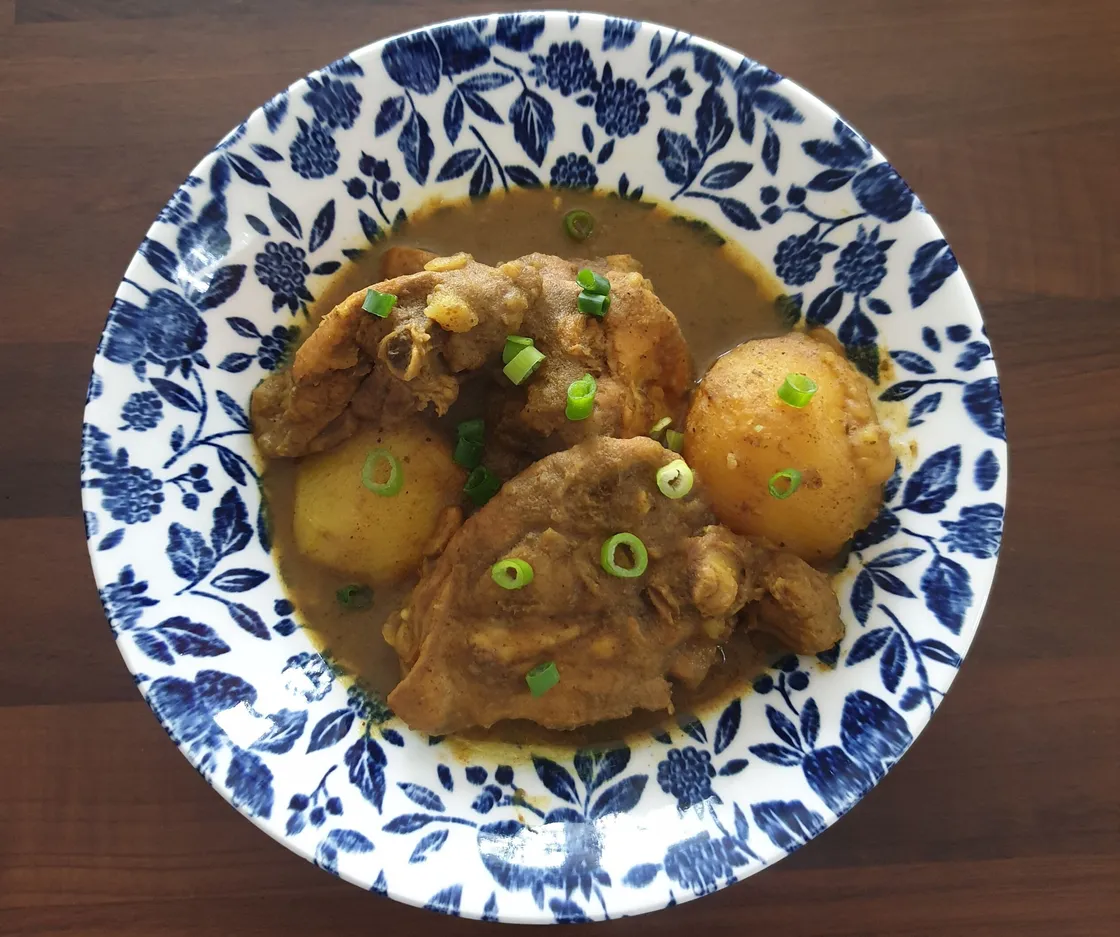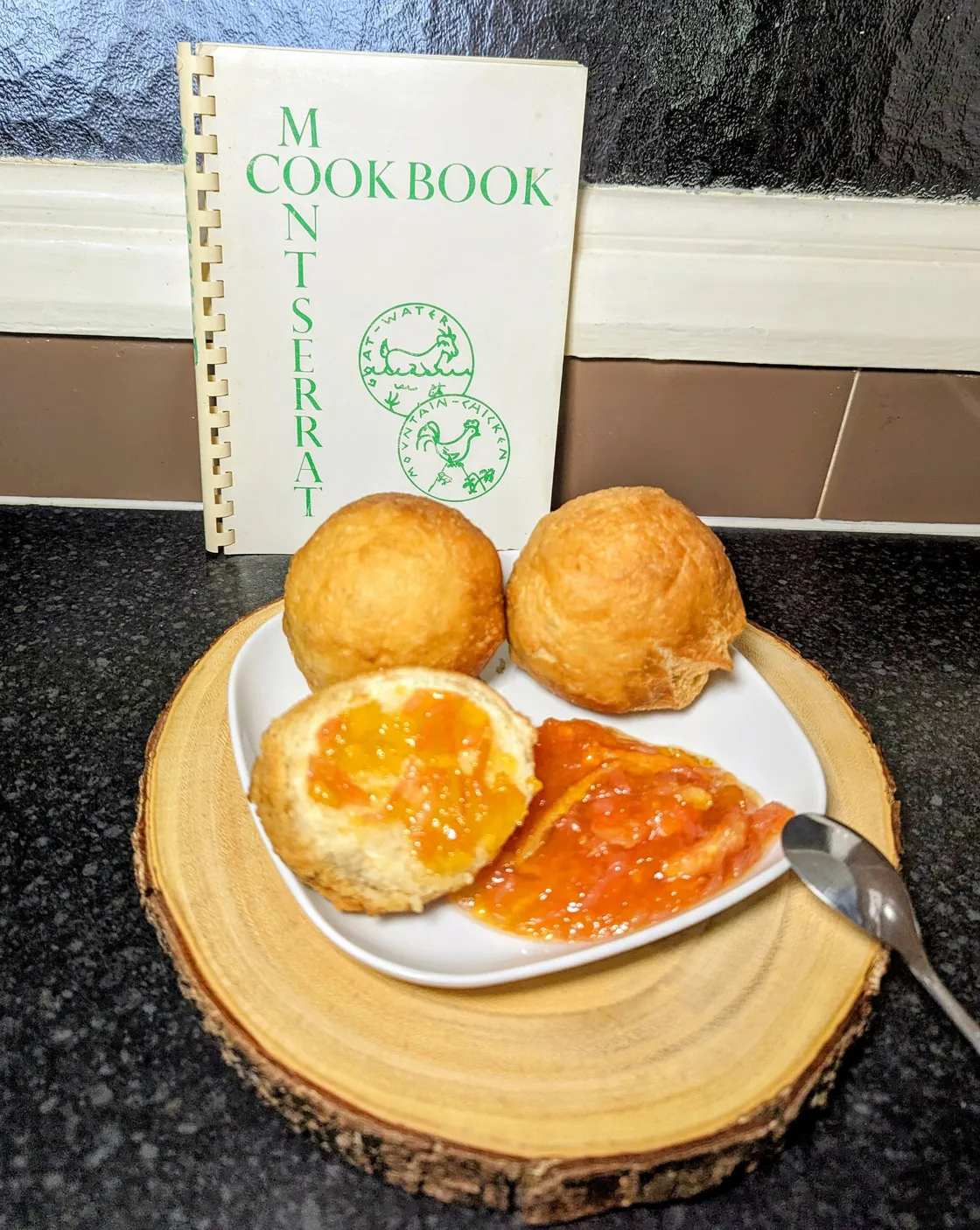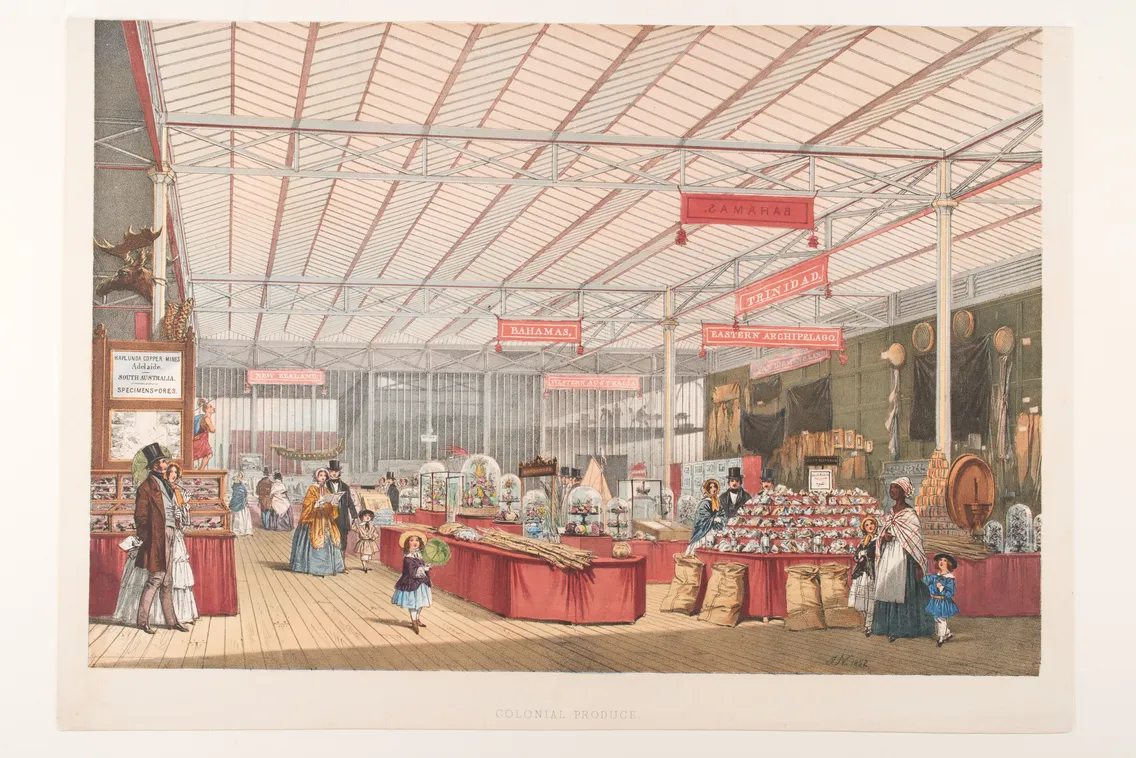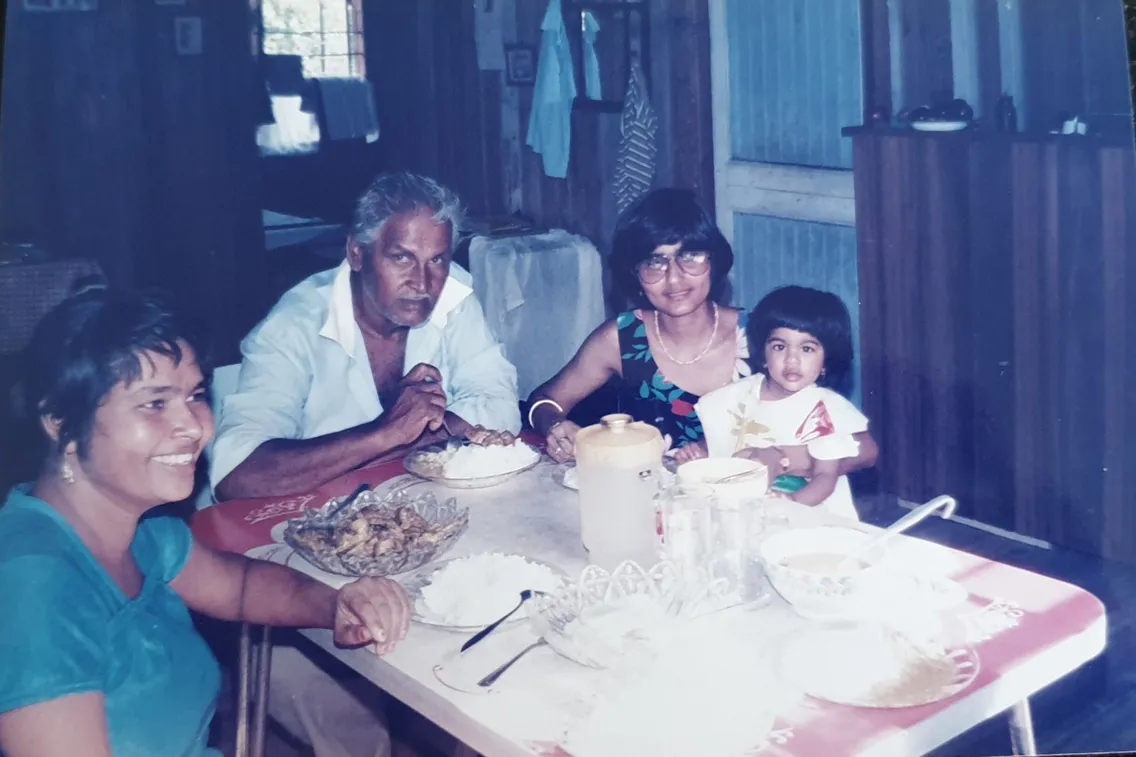15 October 2023 — By Shamal Kumal, Makiya Davis-Bramble
Chicken Curries & Johnny Cakes: The diversity of Caribbean food
The Caribbean has a rich and diverse heritage. Explore how three classic dishes evolved, blending diverse cultures and colonial influences. Two Londoners of Caribbean heritage share their culinary perspectives.
A flavourful journey
There is an undeniably deep connection between food and memory. And more so when recipes have been passed down generations and crossed several continents. So, when Caribbean culinary developer Shamal Kumal and museum curator Makiya Davis-Bramble sat down one fine London day amid aromas of garam masala and freshly baked cakes to try each other’s family recipes, the conversation and memories were equally rich.
Allowing us a peek into their discussion, we find how some of the culinary traditions, ingredients and flavours from the Caribbean have made their way to homes in London. The duo shared two dishes popular in the British West Indies colonies of British Guiana (now Guyana) and Montserrat (which is currently a British Overseas Territory). While Guyana is located on the mainland of South America, it is considered part of the Caribbean due to its British colonial history. It is a founding member of CARICOM, whose headquarters are located in Guyana.
Caribbean food: A complex colonial history
The Caribbean boasts a rich and diverse heritage, comprising distinct cultures and practices deeply marked by colonial history. In the 19th century, the region saw mass deportation from Africa determined by British trade in enslaved Africans, and the arrivals of indentured labourers from India and China, in particular, which were brought to the Caribbean as workforce once the abolition of slave trade was nearing.
Along with them, came family recipes and food memories that were then modified and adapted to a place that was to become their new home. What resulted was a Caribbean cuisine reflective of this complex history. The journey of flavours and memories continued as future generations further migrated to Britain, especially after the 1950s.
Sharing tastes from across the Caribbean diaspora, Kumal talks about a dish from her Indo-Guyanese background, and Davis-Bramble shares a dish from her mixed Afro-Caribbean heritage. Over to them.
What family dish have you made?
Shamal Kumal: Chicken Curry and roti. It’s pretty much a staple in most Caribbean households. In Guyana we say, ‘Chicken Curry’ and in other parts of the Caribbean they say ‘Curry Chicken’, so the name all depends on your particular Caribbean heritage. The ingredients are of course chicken and a blend of spices – garam masala, jeera, turmeric, along with onions, garlic and a little bit of green seasoning. Green seasoning is a very popular seasoning throughout the Caribbean. It is typically a mix of green herbs, so the ingredients vary from island to island.
Makiya Davis-Bramble: A breakfast dish, Johnny Cakes with Montserrat Marmalade. My grandmother was born on the island of Montserrat and had a cookbook called The Montserrat Cookbook, which was published in 1969 by the Montserrat Old People’s Welfare Association. She used the book in a lot of her cooking, so I have chosen recipes featured in the book.
Johnny cakes are a golden doughy fried bread, made with flour, baking powder, salt and lard. Montserrat marmalade is made up of four fruits: orange, grapefruit, lime, pineapple, and is made with cane sugar.

Guyanese Chicken Curry. Shamal Kumal made this Chicken Curry as this was the first Indo-Caribbean dish that her mother and grandmother taught her to cook.
What is the history behind the dishes you’ve chosen?
Kumal: I decided to make chicken curry as it’s the first Indo-Caribbean dish that my mum and grandmother taught me how to cook. It’s a very popular dish and I don't think you can go to any Indo-Caribbean household and not find a version of chicken curry. When my grandad came to the UK from Guyana, he was living in Maida Vale, and in the 1970s and 1980s my family would always shop communally to source Caribbean vegetables and ingredients.
Over time, some ingredients are now more accessible due to the increasing popularity of Caribbean cuisine and wholesalers of Caribbean and African produce.
Davis-Bramble: At that time in London, I know that community word-of-mouth helped families find Caribbean and Asian grocery shops. Was that the case?
Kumal: Yes, my grandad, parents, and uncle would buy meat for the dish from a Caribbean butcher in Willesden, while herbs and spices for the curry would be found in Church Street Market and Ealing Road.
Kumal: In terms of history, Guyanese curry recipes were originally brought from India through indentureship. Essentially, it’s through Indian indentured labourers that Caribbean curries exist, from the ingredients that they carried with them on their voyages to the Caribbean, to the recipes that were adapted to local Caribbean ingredients (like swapping out ghee for the more easily available oil).
“Guyana, in particular, is a massive melting pot of races and cultures – Indian, Portuguese, African, Chinese”
Shamal Kumal
So, the flavour of curries in India do differ greatly from curry seasonings in the Caribbean. Guyana, in particular, is a massive melting pot of races and cultures – Indian, Portuguese, African, Chinese. The food naturally takes on their varied traits, and evolves and develops over time.
Davis-Bramble: Johnny Cakes are a food that also show evolution, and highlight heritage connections throughout the Caribbean. It is a dish that so many islands have, with differences in recipes, cooking styles, and even shape, such as saltfish fritters and bakes. Its Caribbean origins lie in plantation work during British trade in enslaved Africans.
The original name was ‘Journey cakes’ (dating back to the 15th century) as they were taken by the enslaved Africans when they journeyed to plantations further afield. This name most likely evolved naturally over time as the recipe was passed on through different Caribbean English dialects such as Patois. The indigenous people of North America also have their own version with cornmeal.

Makiya Davis-Bramble’s dish, Johnny Cakes and Montserrat marmalade, are from her grandmother’s cookbook from 1969.
Davis-Bramble: Montserrat marmalade is a simple sweet preserve with a large and important history. Its core ingredient is cane sugar. Sugarcane was brought to the Caribbean by colonialist Christopher Colombus in 1493. The popularity of jams and preserves in Europe grew because of the mass production of sugar on plantations during British trade in enslaved Africans. Towards the end of the 19th century, preserves became more affordable and accessible to different levels in society.
Mixing cane sugar with tropical fruits, you can't help but think about the enslaved and indentured plantation workers, and how this condiment came to be. So, while eating this delicious breakfast in London, you are faced with the dark history of sugar trade and Britain, the Empire and colonisation.
Kumal: Absolutely, and the relationship between the Caribbean and sugar remains a complicated one. I've heard stories of elders that worked on a cane fields in Guyana and know some Guyanese people that will not eat sugar because it’s almost too painful to think about how their ancestry was impacted by its cultivation.
What is one thing you would like people to know about Caribbean cooking?
Kumal: One thing that I'd like people to know about Caribbean cooking is that within the Caribbean itself, there is so much diversity because of indentured labour, enslavement, and migration. Even indigenous Caribbean communities have left long lasting traditions in Caribbean cuisine. Spices would have originally been ground on a sil and lorha, which is a stone tablet. Making seasonings from scratch, my mum uses an updated version of a sill (a coffee bean grinder) to prepare Indo-Caribbean curries and marinades.
The wide perception of what Caribbean cooking is, is a very small box. Caribbean food goes beyond the well-known Jerk chicken, and rice and peas. Some dishes unique to Guyana include pepperpot, metemgee, and a delicious gluten-free dessert, cassava pone. I recommend giving each of them a try if you’d like to delve a bit deeper into the different flavours of Guyanese cuisine.
“Caribbean food is a method of storytelling and shares our varied UK and European colonial histories”
Makiya Davis-Bramble
Davis-Bramble: Throughout the Caribbean, cuisines are vast and showcase incredible cultural fusion. Caribbean food is a method of storytelling and shares our varied UK and European colonial histories. When people outside of the Caribbean community think about Caribbean cuisine, there are some dishes that are not thought about as much as others. Such as flavourful seafood like marinated crab, or desserts. To experience the variety of Caribbean cuisine means both different countries and different food groups.
Makiya Davis-Bramble is a Curator at the International Slavery Museum, Liverpool, and Freelance Curator of the 2023 ‘Indo + Caribbean: The Creation of a Culture’ display. She is currently researching Caribbean history, race and gender.
Shamal Kumal is a British-born home cook of Guyanese heritage. She specialises in developing recipes inspired by the food her parents and grandparents cooked her. She creates inclusive spaces and communities for people to discover and share the joy of cooking. Find out more at www.cookingwithshamoo.com and @cookingwithshamoo










